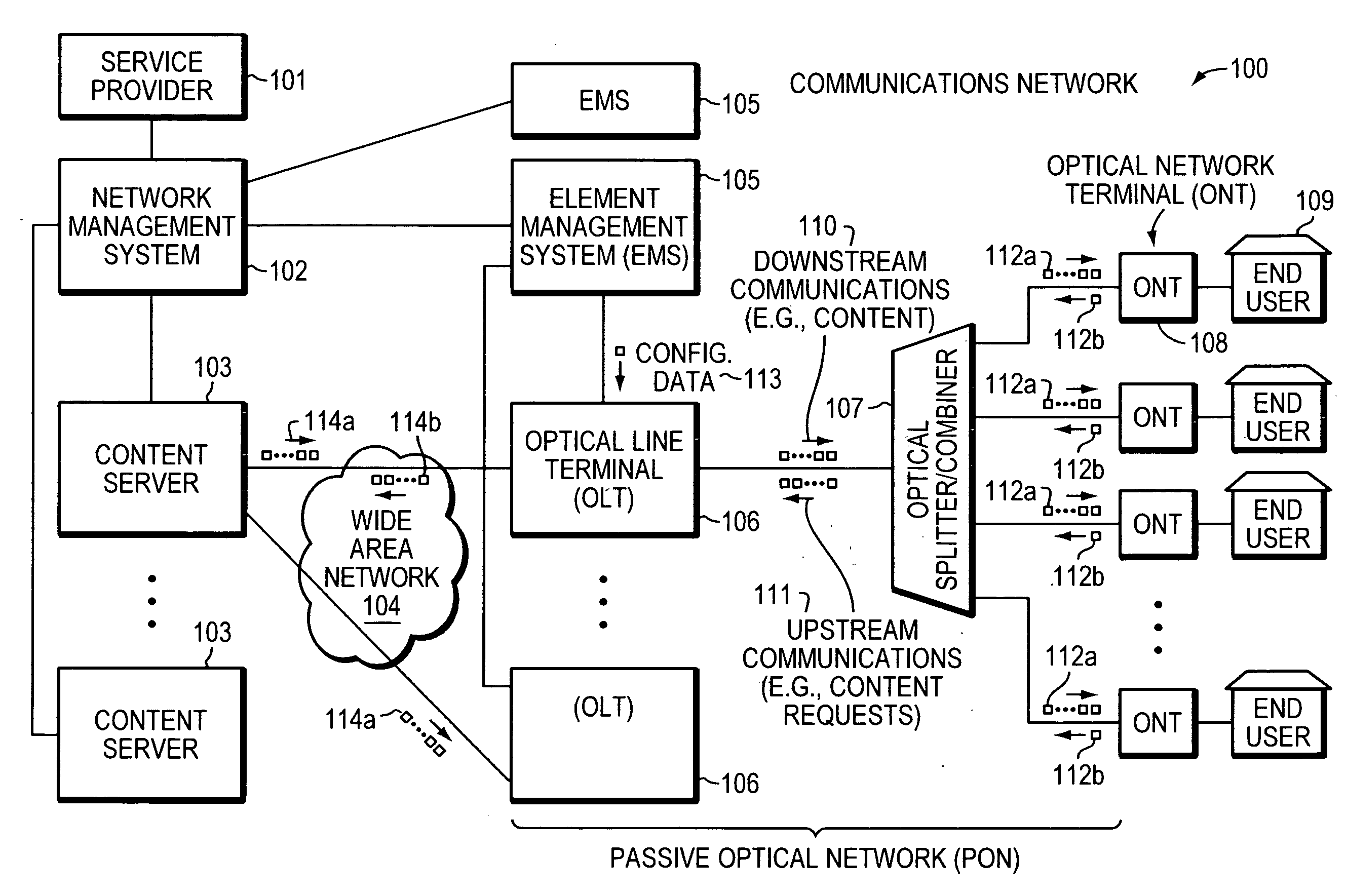Method and system for enabling diagnosing of faults in a passive optical network
a passive optical network and fault diagnosis technology, applied in the field of passive optical network fault diagnosis, can solve the problems of ems having a limit to the number of alarms, unable to monitor stability of the ont and diagnose a source of instability, and becoming less feasible to rely on the management system to handle a large number of alarms
- Summary
- Abstract
- Description
- Claims
- Application Information
AI Technical Summary
Benefits of technology
Problems solved by technology
Method used
Image
Examples
Embodiment Construction
[0025]A description of example embodiments of the invention follows.
[0026]An example embodiment of the invention enables diagnosing of faults in a passive optical network (PON). Diagnosis can be difficult due to alarm message storage constraints in large networks and alarm and state information clearing or changing at nodes generating alarm messages after a change in alarm or other state by the nodes generating the alarm messages or by associated nodes. Centralized techniques for maintaining or diagnosing the alarm conditions are thus limited or ineffective. Therefore, a distributed approach based on information related to ranging of optical network terminals (ONTs) within the PON is employed in an example embodiment of the invention. The information related to ranging used by the example embodiment serves to overcome problems previously encountered in diagnosing faults in a PON, as described above. Before presenting details of example embodiments of the invention a description of a...
PUM
 Login to View More
Login to View More Abstract
Description
Claims
Application Information
 Login to View More
Login to View More - R&D
- Intellectual Property
- Life Sciences
- Materials
- Tech Scout
- Unparalleled Data Quality
- Higher Quality Content
- 60% Fewer Hallucinations
Browse by: Latest US Patents, China's latest patents, Technical Efficacy Thesaurus, Application Domain, Technology Topic, Popular Technical Reports.
© 2025 PatSnap. All rights reserved.Legal|Privacy policy|Modern Slavery Act Transparency Statement|Sitemap|About US| Contact US: help@patsnap.com



